A Quick Look at the Moto X - Motorola's New Flagship
by Brian Klug on August 1, 2013 3:00 PM EST- Posted in
- Smartphones
- Qualcomm
- MSM8960
- Motorola
- Mobile
- Android 4.2
- Moto X
- S4 Pro
Touchless Control
Though the UI for the Moto X is indeed stock android basically everywhere ($12.5 Billion later, Google finally killed Motoblur), there are two specific software customizations on the Moto X which are chief differentiators. The first of which is touchless control, which is essentially a combination of always-listening voice command, and Google Now.
The way it works is simple – say “OK Google Now” with the phone in literally any state, and you’ll get dumped into a special Google Now prompt. It works with the phone in standby mode (screen off, powered on, but in deep sleep), or with screen on.
There’s a training initialization which asks you to say “OK Google Now” in a very quiet room three times (I had to lock myself in a bathroom for the meter to register quiet enough) to enable the feature. After that, saying OK Google Now works well and powers on the phone to this menu. Users cannot change the OK Google Now keyphrase to something custom.
For this system, Motorola uses a natural language processor (NLP) of custom design that I haven’t quite tracked down yet. This controller constantly listens on the 3 microphones onboard Moto X for the “OK Google Now” keyword, then wakes up the AP and enables the Google Now prompt. Motorola says it went with this solution to enable always-on voice without killing battery life from running the main AP all the time (which does make sense). It works surprisingly well, maybe even too well, as even after training saying “OK Google Now” can turn on every Moto X around you. Just something to be aware of.
Contextual Processor
The contextual processor powers two other features, active display, and the gesture-enabled quick capture camera.
Active display is Motorola’s solution to the constant device checking and glancing that users do to find out why a notification fired. It’s a view that sits above the lock screen and displays the last few notifications and enables you to dive into the appropriate app that triggered it. Information just appears on the display when it’s in an off state, breathing in and out when the device is face-up on a surface. Otherwise, flipping the Moto X from face down to face up will bring up the display – I can’t screenshot it, this seems to live outside Android entirely.
To get a preview, you can touch the notification, and then drag up. Dragging left or right clears notifications. Dragging up into a notification will dive into the appropriate application.
There are privacy settings to enable or disable how much information you can have displayed on the active display notification screen so this doesn’t bypass if you have a lock screen on purpose.
I leave my phone face-up on my desk instead of face down to prevent screen scratches, where and the Active Display notification screen pulses periodically with the time and when notifications come in. It works well, I just need to spend time with it.
The other contextual-powered feature is quick capture, which is the quick enter camera gesture. Hold the Moto X, flick your wrist like a screwdriver, and you’ll get popped into Motorola’s camera UI for the Moto X.
The UI is very simplified and makes some interesting choices. Tap to focus and expose is disabled by default – instead tapping anywhere captures a photo. Tap to focus can be re-enabled in the settings, which fly out from the left, but now tapping anywhere focuses on that region and captures immediately. I’m not sure if I like this change. The camera sensor is 16:9, and the preview is likewise 16:9, so there’s at least no cropping going on.
The UI includes HDR, flash control, tap to focus enable/disable, slow motion video (720p60), panorama, location tagging, shutter sound, and the flick gesture enable/disable. What’s missing is photosphere support, unfortunately. Dragging right gets you into the gallery, and there are buttons for changing to the front facing camera and taking video instead of photos. This is sort of a tweaked Android 4.2/4.3 camera UI, with stuff just moved around and photosphere removed.
I’ve done some digging around and believe that Motorola is using a TI MSP430 microcontroller for its contextual processor, as this seems to do at least sensor fusion for the different situational positions. I’m not sure if this also powers the active display functions but wouldn’t be surprised if it did.


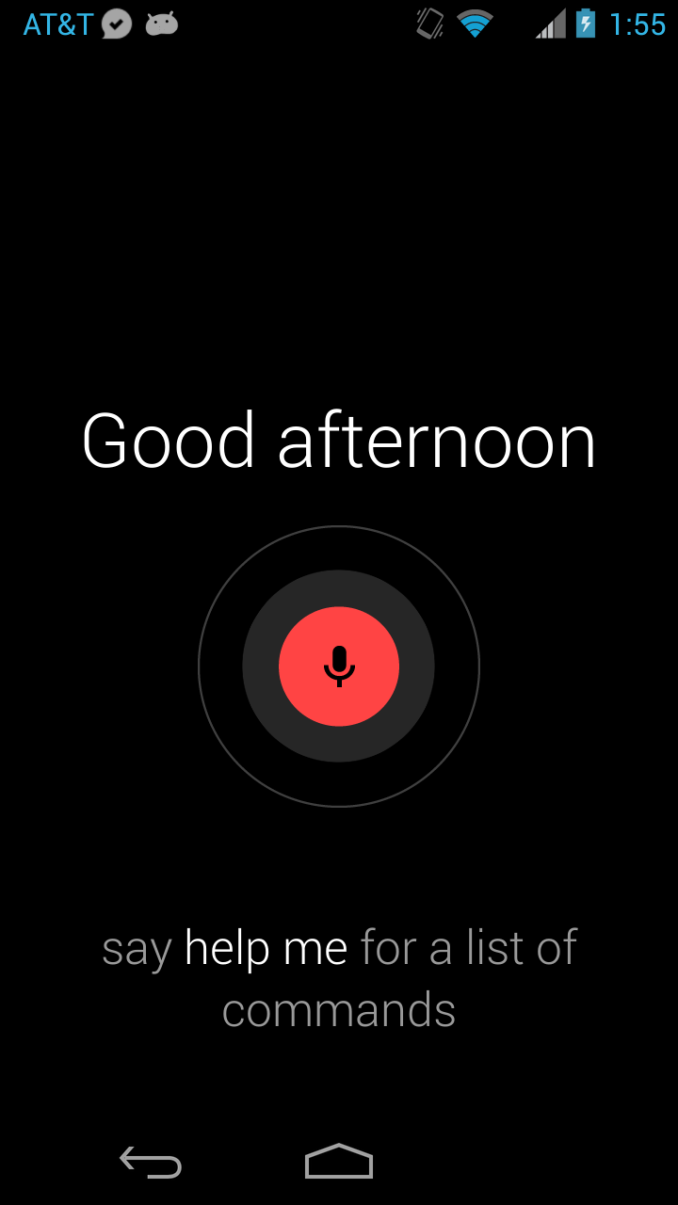
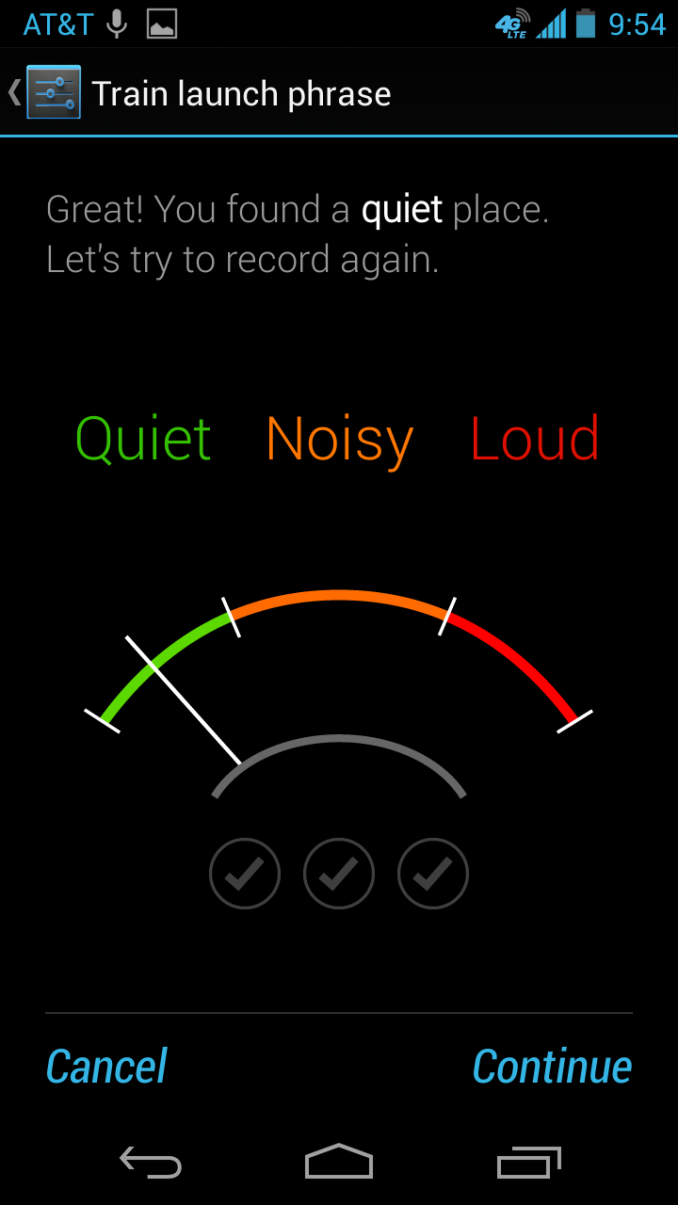
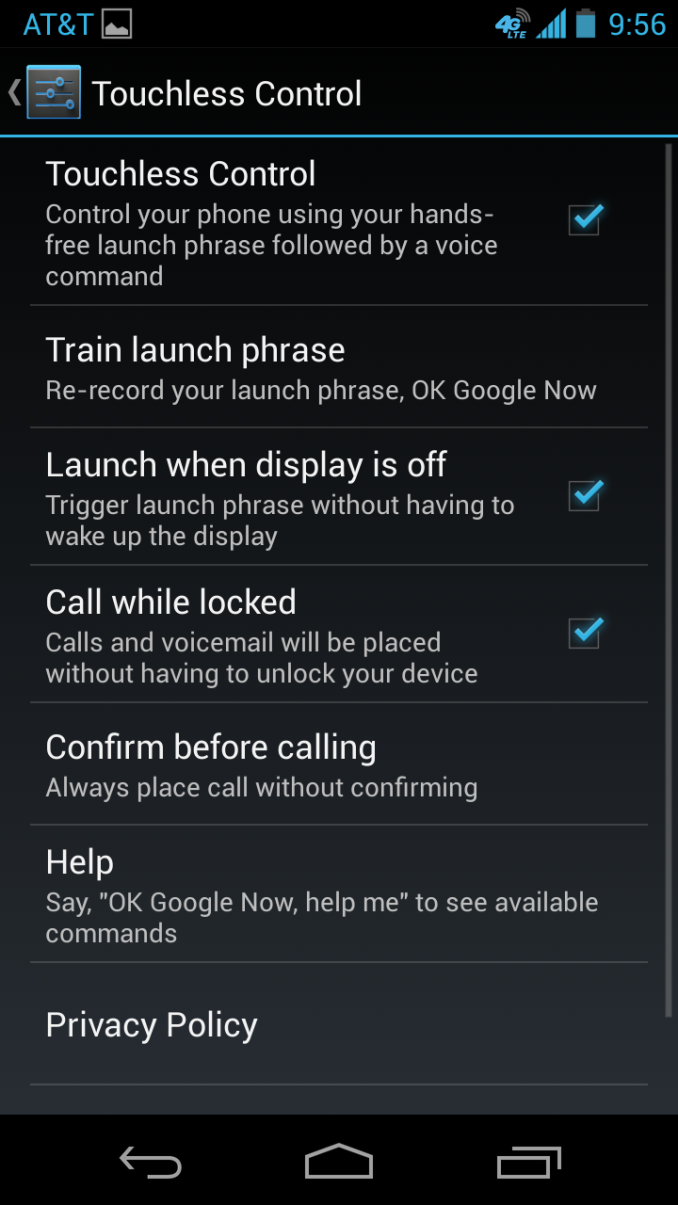
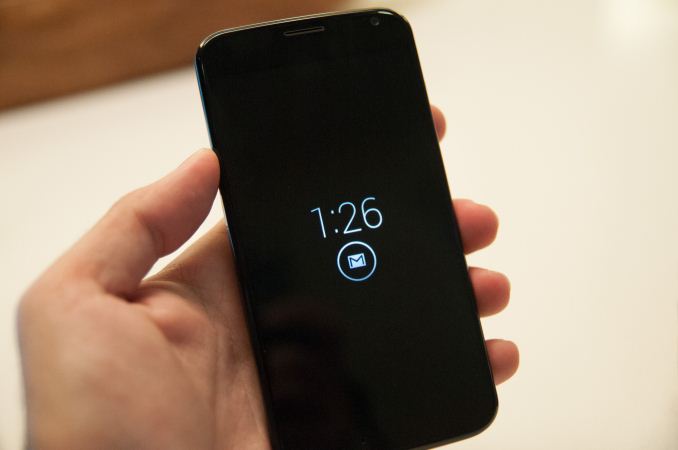

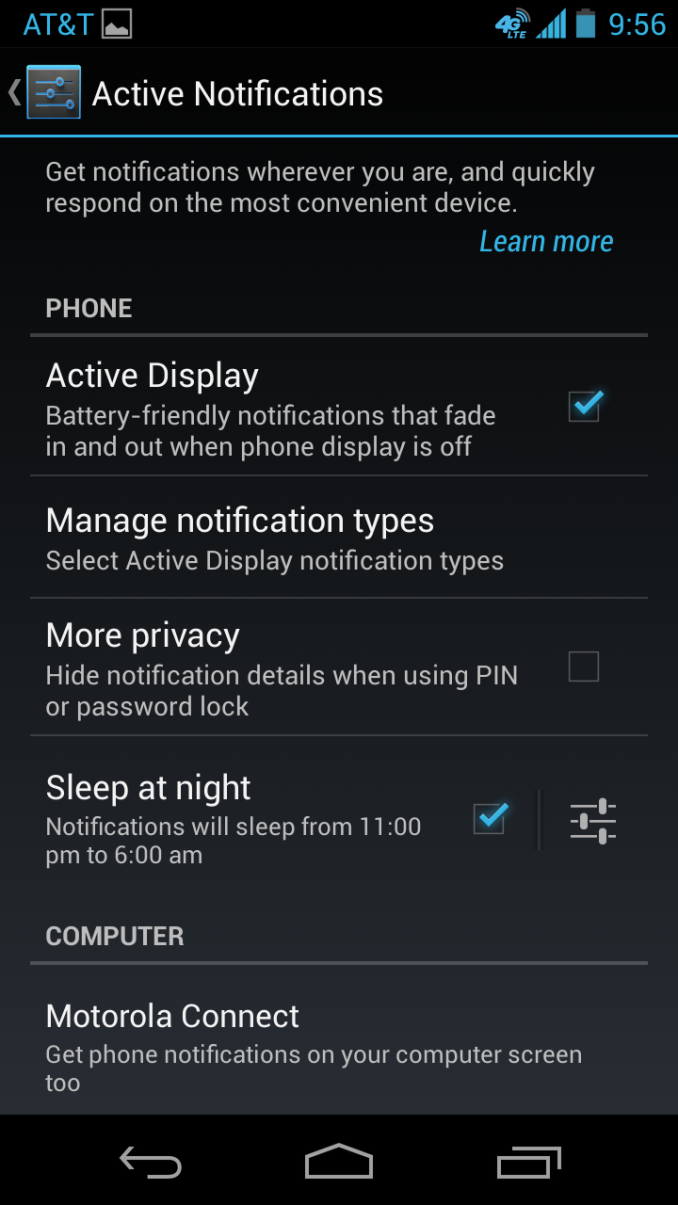
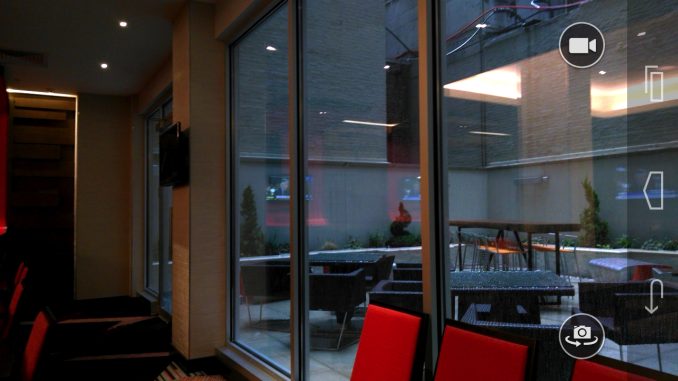
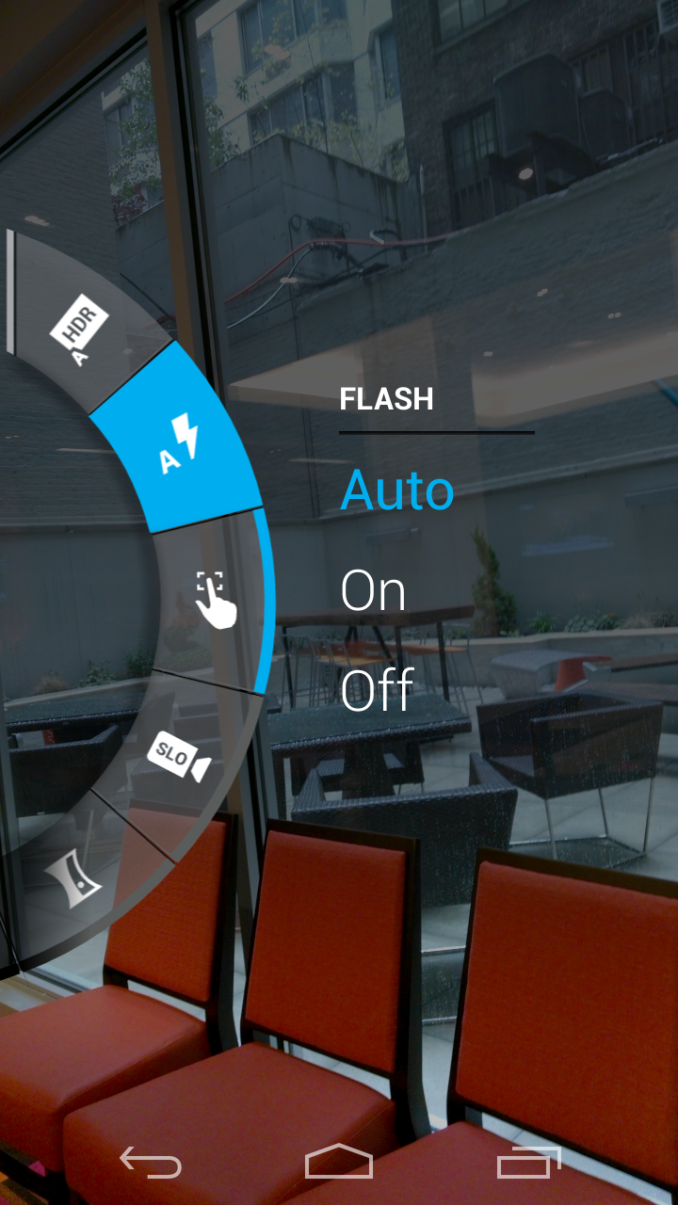








162 Comments
View All Comments
BryanDobbins - Saturday, August 17, 2013 - link
my neighbor's mom makes $72/hour on the internet. She has been unemployed for 7 months but last month her pay check was $19114 just working on the internet for a few hours. Read more on this web site... http://goo.gl/qHdAQ4gobaers - Thursday, August 1, 2013 - link
8960Pro is mid-range now? Man, things move fast in this business.sherlockwing - Thursday, August 1, 2013 - link
LG is announcing a 8974(Snapdragon 800) phone with 5.2" 1080p display in 6 days, ofc a 8960Pro 720p phone is mid-range.Paulman - Thursday, August 1, 2013 - link
It's dual corePiano Man - Thursday, August 1, 2013 - link
$199/$249 on a 2 year contract for this phone? What a let down.kosmonautbruce - Thursday, August 1, 2013 - link
Same reaction I had. I was looking for this to be much cheaper off contract than the now likely $500 plus. Oh well, will likely wait until the next version of the Note comes out instead.amdwilliam1985 - Thursday, August 1, 2013 - link
totally agree, I was hoping Nexus phone prices like $300/$350 so I can replace my SGS3 with it. Guess not, there's always the Nexus 5 to look forward to at the end of the year, hopefully with a 32GB option.darwinosx - Thursday, August 1, 2013 - link
Motorola cannot afford to make phones for no profit like the Nexus line.zlandar - Thursday, August 1, 2013 - link
Who cares if Motorola or any other company can afford to or not?The only thing that matters to most consumers is the price for the product. They don't care if certain companies can built products for less because of better efficiency, scale, etc.
Google can "afford" to built the Nexus line for little to no profit on the hardware side because they want to make the money on the advertisement side. There is a method to the madness.
KZ0 - Thursday, August 1, 2013 - link
Motorola probably cares if they make a profit. They happen to set the price as well.